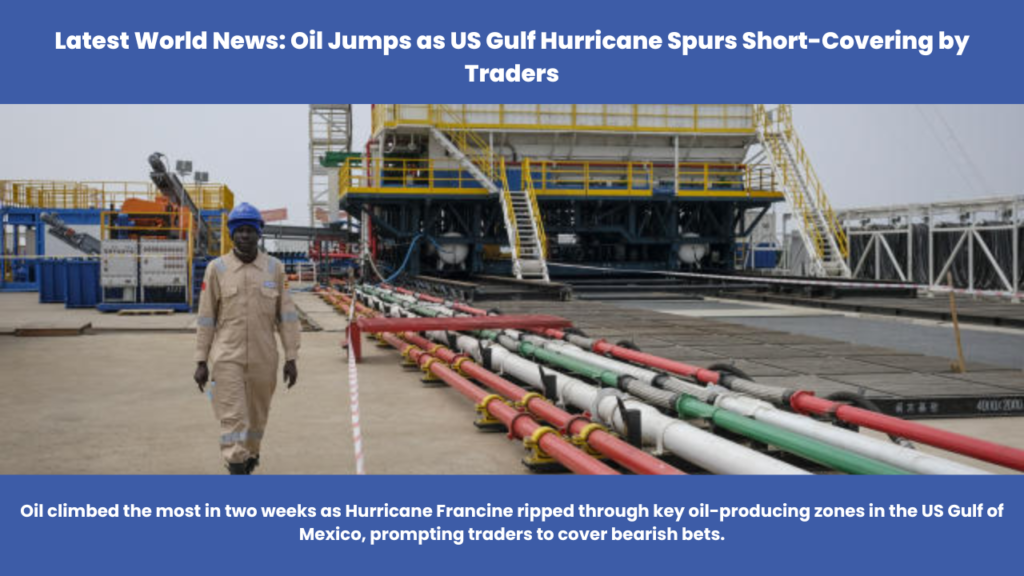Oil climbed the most in two weeks as Hurricane Francine ripped through key oil-producing zones in the US Gulf of Mexico, prompting traders to cover bearish bets.
West Texas Intermediate rose more than 2% to settle above $67 a barrel, erasing most of the previous day’s plunge. Global benchmark Brent crude advanced to top $70 a barrel.

The gain was fueld by short-covering after the storm prompted oil companies to shut in roughly 25% of Gulf crude output, said Dennis Kissler, senior vice president for trading at BOK Financial Securities. Exxon Mobil Corp., Shell Plc and other offshore drillers evacuated crews and suspended operations on platforms threatened by the hurricane’s lashing waves and high winds.

“While global demand has weakened, current US supplies could tighten further if Hurricane Francine causes multiple days of well shut-ins,” Kissler said.
The storm overshadowed a bearish US government tally that showed a surprise 833,000-barrel increase in domestic crude stockpiles. An industry group had projected a 2.79-million barrel decline, and Bloomberg users were expecting a 700,000-barrel drop.

Crude has sunk by almost one-fifth this quarter on concerns that slowing growth in the US and China, the leading consumers, is hurting energy demand amid robust oil supplies. Market metrics — including the shape of the futures curve — indicate that conditions are quickly becoming far less tight, with pockets further out making a brief foray into a bearish contango structure.
Speculators, led by heavy selling from CTAs, had taken up the least bullish stance on record coming into this week, and traders have warned about the potential for price spikes as money managers unwind some of the bearish bets.
Meanwhile, Francine’s winds are raking the coast of Louisiana, where it is expected to make landfall later Wednesday. In addition to offshore well shutdowns, as many as eight onshore refineries lie in the system’s potential path.

Oil’s recent retreat had already seen OPEC postpone an output hike, stoking investor concerns that the extra barrels could be still be brought to the market closer to 2025. The International Energy Agency — which will issue a revised monthly outlook later this week — said in August the market risked higher inventories next year even if the cartel canceled the output increase.
“We’ve got closer to what looks like a high-conviction surplus for next year,” Citigroup Inc. head of commodities research Max Layton said in an interview with Bloomberg television. “The market has just simply got closer to D-Day really.”

To get Bloomberg’s Energy Daily newsletter into your inbox, click here.
With assistance from Devika Krishna Kumar and Yongchang Chin.
This article was generated from an automated news agency feed without modifications to text.
Help us make your experience better by Follow Us


